A (Not So) Brief History Of Digital Marketing
The digital revolution was born in the summer of 1981 when IBM introduced the world’s first PC. The system came with roughly 50 kilobytes of memory that can process text, play games, and hook up to your television. Businesses saw great potential in this new system and began to take advantage of its compact computing power in many ways. Though this first allowed businesses to reach a significant amount of people in a short amount of time, to convert them into customers first required digitizing customer and prospect information.
The birth of customer relationship management.
The first company called “Act!” was the first to apply this method in the mid-1980s. Their software gave rise to the sales force automation platforms which led to what marketers call customer relationship management systems. While “Act!” was the first to create a sales automation platform, the University of Illinois was the first to create a graphical web browser in 1993 by networking with companies such as France’s Minitel and utilizing services like Prodigy, and later, America Online.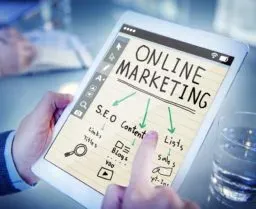
The browser was called Mosaic which its core components would be taken to market as Netscape Navigator. With Microsoft getting into the game with Internet Explorer, soon everyone was online. A few short years later, businesses and consumers were eager to get involved with anything and everything that had to do with the Internet upon realizing the virtual sea of possibilities. Suddenly, there were web pages for just about every service and product out there.
With consumers having access to information that would influence them to make buying decisions, search engines became the gateway for anything that needs to be found online. Thus, when the 21st century rolled around, Google had realized that this could be exploited and introduced the first version of Adwords. Adwords allowed advertisers to make a bid to show their ads to people typing in keywords related to their products or services. Publishers were also putting up content with banner ads. With Ad serving technology was connecting supply and demand at scale.
The early days of email marketing!
Email became an online phenomenon as it was an electronic version of direct mail. With the online world being so dependent on email throughout the 1990s, advertisers monopolized this method by continuously sending messages about their product or service as it was cheap and easy. This resulted in the birth of new and integrated digital marketing automation platforms.
As computers and online tools began to thrive, the web evolved from a platform of information to a platform of interaction. People were now willingly entering their credit card information to make purchases And by 2011, eBay had sold nearly 40 Ferraris through its mobile app. With more and more purchases being done online, an e-commerce revolution was born. Nowadays, drinks can even be purchased through a mobile app and picked up at the nearest shop.
Despite the online marketing revolution, traditional media advertising still remained an integral part of the marketing mix.
Billboards and outdoor advertising can still be seen in high quality as people traverse the streets. There is also no shortage of radio stations to tune into or print media that is easily accessible. However, these mediums have adapted or are adapting to current and incoming technologies. Magazines have embraced digital formats and television with online channels. And while it may not be everywhere in the world, there is technology that depending on the person standing at a bus stop, ads will be varied.
Technology has evolved rapidly in just over 20 years. Consumer behavior has also shifted based on this continuous digital revolution. Purchases became more convenient and information of just about anything and everything is easily accessible at a touch of a button, a swipe of a button, and good Internet access. To continue to make things simple for everyone, marketers have kept up in leveraging these new platforms, mediums, and processes that change as consumer purchasing patterns change. As digital marketing tools and technology continue to change, it is worth looking into the 21st-century online landscape.
What Is Digital Marketing?
 Digital marketing is the promotion of your product/service via online or digital channels such as social media platforms. While the Internet is the most popular and most closely channel associated with digital marketing, other include mobile apps, mobile instant messaging, electronic billboards, digital television, radio channels, and wireless text messaging. Unlike traditional marketing, digital marketing involves an organization using online channels and experimentation of different methods to analyze and understand what digital marketing campaigns are working effectively, what needs improvement, and what needs to change. Digital marketers monitor online activity such as sales conversions, goals, what content works and doesn’t work, what is being viewed, and for how often and for how long.
Digital marketing is the promotion of your product/service via online or digital channels such as social media platforms. While the Internet is the most popular and most closely channel associated with digital marketing, other include mobile apps, mobile instant messaging, electronic billboards, digital television, radio channels, and wireless text messaging. Unlike traditional marketing, digital marketing involves an organization using online channels and experimentation of different methods to analyze and understand what digital marketing campaigns are working effectively, what needs improvement, and what needs to change. Digital marketers monitor online activity such as sales conversions, goals, what content works and doesn’t work, what is being viewed, and for how often and for how long.
Nowadays, a consumer’s life can revolve around digital marketing channels.
Digital marketing is about finding different ways to present the right content and the right ad to the consumer at the right time. While print is still going strong, it has seen a drop in readership, and people are switching from cable to on-demand shows brought to them by digital companies like Netflix. A text message can direct a consumer’s attention away from an ad being shown on a billboard or at a bus stop. Streaming music has slowly begun to replace radio, and by paying for services there will no longer be advertisements interrupting us. To see reviews and pictures about a local business, Google Local and Yelp has already replaced Yellow Pages.
People are using their mobile devices to scan barcodes, chase details, and finding cheaper products or services online. As a business, you must stand out or capture the consumer’s attention on these online platforms. With so many digital marketing tools, channels, and interaction points, digital marketing can become overwhelming. To narrow the landscape, there are three types of media that marketers use online: paid, owned, and earned. Your paid media is everything that you have invested in such as Facebook paid ads, display marketing, and Google Adwords. Owned media are channels such as your website, list of customers that you send e-mails to, and a blog with an active readership. Earned media would encompass your efforts: your social media accounts, mentions on other blogs, and any articles written by you.
All of these channels will overlap, similar to how a user will interact with all three of your channels simultaneously. Together, these serve as the foundations for digital marketing. At the end of the day, digital marketing is the prospect of putting your business in front of a global audience and guiding them through your content, ads, and anything else keeping in mind the ultimate goal you want to accomplish.
What Are Common Digital Marketing Terminologies?
There are many digital marketing terminologies used by marketers to define their strategies and outcomes. To make things simpler, these are some of the most common terms that you will hear marketers use.
Perhaps one of the most important components of digital marketing is telling what the consumer should do next – your Call to Action. A call to action is a way to provoke a response. For example, your call to action can include telling your audience to give your YouTube video a thumbs up or to go follow your blog. Call to Actions typically includes a verb, such as Buy Today or Save Now. These appear after you’ve presented content about your business or a topic you were addressing.
Most often you’ll find them on banner ads, website landing pages, and in social media posts. If your target consumer follows your call to action, you will often encounter what is called the Bounce Rate. The bounce rate is referred to as a visitor to your website, page, or blog post but leaves immediately without clicking on other links. The bounce rate is presented in a percentage of these visitors.
That bounce rate visitor must have come from somewhere such as an email promotion or an advertisement shown. Regardless of where they came from, you will want to measure your Click-Through Rate. Your click-through rate refers to how many people are clicking on your ads or links in your email campaigns. This will give you an idea of what digital marketing strategies are working and what needs improvement. For example, if you find that there is a high click-through rate for Ad A on facebook but not on Ad B, you should consider what changes you need to make to Ad B or review where and to whom the ad is shown. When a person views your ad, it is called an impression and the click-through rate is in relation to the number of impressions. Impressions are often associated with frequency.
Frequency is defined as the duration of time one user sees your advertisement. If you have 15 impressions of an ad, with a frequency of three, then that would mean five individual people would have seen that specific ad. Your ads have the sole purpose of convincing the user to carry out your intended goal. This could be making a purchase or downloading an application. Once they have successfully completed what was intended for them, they have been converted.
Your conversion rate that you see on your reports in Google Analytics is the percentage of visitors who have completed your intended goal. A Tracking Pixel is what is installed on your website to track ad views, conversions, and website visits. When a consumer fails to complete the goal you intended, it is called Abandonment. A consumer follows a particular path laid out for them by you to complete a transaction or an online form. However, they decided to leave the process early. A continuous goal in the field of digital marketing is to reduce abandonment as much as possible.
Your ads should bring a positive return on investment.
To find out how much it is costing you per goal completion, you need to look at the Cost Per Acquisition or CPA. This can also be referred to as Cost Per Action. If you decide to run an advertisement costing you $100 with the goal of getting users to download an application, if one person downloaded the app, the CPA for that single user would be $100. That CPA would be compared to your lifetime value or LTV. LTV is attributed to the customer value: some customers will only buy once while others will become frequent visitors and buyers. Usually, with paid advertisement, your CPA should be lower than your LTV.
When a user clicks on your ad, it is important that the user will arrive on a page that is specific to your product or promotion. This will increase the chances of them converting. This page that they land on is called the Landing Page and is often thought of as the first impression to your brand or company. Now, let’s take a look at Organic Results. When you use search engines, you will get two types of results: paid and organic. Paid results are the first couple of links with a tiny label that says “Ad” on the left-hand side. On the other hand, organic listings achieve their rankings through search engine optimization.
What Are The Components Of Digital Marketing?
As the world of digital marketing continues to expand, the number of options available to a marketer are endless. People are continuously creating and adopting new technologies and exploring new ideas that are being introduced through the online community. While your digital marketing strategy does not need to include every available channel, it is important to keep in mind the ones discussed and evaluate which ones are the most appropriate for your goal completions. You may end up using a handful or find ways to leverage other resources.
Prioritization becomes even more crucial if you have limited resources.
If you are implementing a new channel, it is also important to see its impact on a daily basis. Whether you should continue working with the new channel is to evaluate the effort required and its value. There are four common areas used in an online marketing strategy: SEO, Search Marketing, Social Media, and Video marketing that usually have a focus on these four channels respectively: Google, Google AdWords, Facebook, and YouTube. Depending on what your business is, your score in terms of effort and value will vary. By looking at your scores, you can make a judgment of which channels are worth further exploration.
The channel that brings high value and exerts the most effort is the optimal starting point. However, just because something requires high effort but results in low value does not mean that it’s not worth investing in. Depending on your goals, you may need to alter your digital marketing strategy: you could be using the channel correctly but are not optimizing it to bring out its worth and value to your business. A low value could still provide a significant return on your investment but is not as significant as a channel that gives high value. It is never a bad idea to do some research on digital marketing channels first to consider your options.
What Are The Common Digital Marketing Strategies?
With the Internet being a massive community, it is difficult to have an online presence. However, by going digital for just the sake of having a presence is not an effective strategy. Many businesses often rush to take advantage of the online community that they fail to consider a strategy that will offer them a strong return on their investment. Without putting in the time to derive a strategy, you will likely miss out on great opportunities and discover that money is going to your competitors instead. Because online marketing encompasses so many details, it will be easier to look at your one strategy as three separate entities that share a common goal.
Your end goal is to have developed a cohesive digital marketing strategy that covers your business, customer, and marketing aspects. Who is your target audience? How do you plan on being perceived by that market? How are my targets using digital technology? Which channels are they most active on? What channels should you be investing more in? By asking yourself these initial questions before planning your digital marketing strategy, you build yourself a roadmap that will keep you focused. Keep in mind, however, that there isn’t a solution that will answer all of your marketing strategies.
An appropriate and effective strategy that fits your type of business is the most effective. If you’re selling custom made merchandise to sports fans online, your plan will have little to no resemblance to one to a local restaurant. While strategies will vary, the focus will always be to create a shared value. A shared value is when your goals overlap with your customers. To get the best results out of your digital marketing strategy, build your plan with shared value in mind. Essentially, put yourself in your customer’s position and adopt the mindset that you are digital marketing an experience. By keeping this idea in the back of your mind, you will be guaranteed a positive return on your investments.
How Can You Build A Business Strategy?
A business strategy can only be effective if you have a clear understanding of your business from the start. It is only when you have a big picture that you can determine which route makes the most sense. When you hit a roadblock, you’ll need that big picture to pick a new route. To build an effective business strategy, you want to identify your mission statement, objectives, your value proposition, and the elevator pitch. These four elements will narrow your focus to look at your business from a customer’s perspective and our own marketing strategies. Before jumping into your strategy, consider these basic questions: Is your business digital? Are you utilizing the right structure? Will your efforts fit into your existing online processes? If so, how? Do you have the time necessary to maintain your plan? Over time, your strategy can be refined to better suit your needs and goals.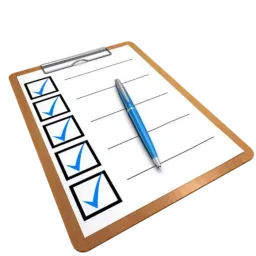
While it may sound unnecessary, your one sentence mission statement will act as an anchor for your strategy.
This summarizes what you are trying to do and what your end goal is. Regardless of what your statement is, it must be able to stand on its own. Other than that, you can make it as vague or specific as you want. After you’ve chosen your mission statement, you should define at least three organizational objectives. These objectives are the pieces that are necessary to keep you on track with small goals and maintain a positive brand identity. For example, your objective can be to sell pharmaceutical products. And to build or maintain your brand identity is to receive validation from your customers or hospitals. Selling your products and to build positivity around your brand image is what your business is set out to do.
Your next step is to consider the following questions: Why makes you different from your competitors? Why do you stand out? What makes you unique? Keep one or two of these value propositions in the back of your mind. Lastly, your elevator pitch helps you think concisely. Because digital marketing has many channels that limit the amount of information you communicate to your audience, by building a business strategy it will help you to practice thinking in a concise manner. By going through this process, it will help you understand your business and what result(s) you want to see out of your digital marketing efforts.
How Can You Build A Brand Strategy?
By building a brand strategy, you can understand who your customer is and where to connect with them. The right audience will bring you a positive ROI while the wrong audience would be a waste of time to pursue. Once you found the right audience, you need to consider what motivates them as it relates to your objectives and what digital marketing channel you can use to connect with them.
Customers who shop at stores will be the same people who will buy online.
The only difference between them is that majority of the power is given to the digital consumer. This is why, traversing into the digital community, is both a blessing and a curse. You have to be specific with who you are targeting, but that does not necessarily guarantee profits. Each view costs you time and money, but because online consumers know exactly what they are looking for, they will be specific with their searches. Your target audience will be expecting a niche. And by effectively utilizing your digital marketing efforts, you will be able to seek out this customer.
 Depending on what your business is, you may segment your audience into different audience categories. The number of segments you have can also vary. Get extremely specific or start off with something simple. For example, if you are running an online sports store, one of your segmented audiences could be females ages 24 to 35 who have an interest in fitness. Now it is time to adapt the mindset of your target audience.
Depending on what your business is, you may segment your audience into different audience categories. The number of segments you have can also vary. Get extremely specific or start off with something simple. For example, if you are running an online sports store, one of your segmented audiences could be females ages 24 to 35 who have an interest in fitness. Now it is time to adapt the mindset of your target audience.
Ask yourself what their goals are and what they are looking to accomplish? Let’s say that the identified audience above is interested in seeing fitness results faster. Now that you are aware of who your audience is and what their goal(s) are, what mediums will they be using? Is it a social network? Is it a blog? Will they be more likely to be searching on Google? Or, will they be likely to be coming from a specific website?
Now, you need to soak in your goals for the segmented audiences. For each segment, you should understand four things. What is your business goal? What is the shared value? Look at your key performance indicators. Lastly, create a target.
Going back to the previously mentioned audience, the objective for female ages 24 to 35 who have an interest in fitness is to see results faster. Your business goal could be to sell your latest running shoes or fitness equipment. With each business goal, identify why the customer will be likely to see a shared value. In the example above, the segmented audience is interested in seeing results faster and with your latest products, it will help them achieve that. Perhaps you want to sell 300 units in a month. This target is directly related to your KPIs. As such, it will be beneficial to thoroughly think through your core demographic, the goals for each, and what your final target is.
How Can You Build A Digital Marketing Strategy?
Each strategy builds upon the strategy proceeding it, and each time you will get more and more specific. Your digital marketing strategy will be a combination of many individual plans. Each will be tailored to meet one goal for a specific audience segment. Referring back to the earlier example, you want to target females ages 24 to 35 interested in fitness who wants to see results faster. And one of your business goals is to sell your running shoes or fitness equipment. From here, you are now going to consider what channels to market on and develop a digital marketing strategy that will effectively communicate your efforts to that audience.
You may not be aware of all the channels available to you or have access to them, but not to worry. First, take an educated guess and refine this plan as you go. For this particular audience, it is likely that the channels they will be active on are Facebook, Pinterest, Instagram, and perhaps Twitter. Keep in mind to also market on your website’s blog.
Now that you’ve identified which channels you want to market on, what will you do in each channel? In this case, you will run ads relating to your shoes and equipment on Facebook and pay for sponsored links back to your website’s blog. Each digital marketing platform will have its unique ways you can push out your message. Leveraging efforts in paid and owned media to influence your earned media will likely be necessary. To encourage blog distribution, you can add shareable links and questions in articles to spark conversation. Keep track of your resources and how it can be properly integrated within each channel. As you market across these different platforms, keep in mind your company voice and company culture.
Be flexible. As you collect more and more data, your desired audience will always be a step closer to you.
When you implement your marketing strategy, you may find that it was too aggressive or too conservative. Your marketing strategy is the final piece to a large puzzle that you’ve been building on. The efforts you’ve put in previously leads up to this link that fits together in a logical manner. But it is not permanent. You are free to review and change your strategies as data comes pooling in. Remember that regardless of your results, efforts will never be wasted. There is always room for recycling and revision.
Get Started With A Website
 Your website is a crucial component of your digital marketing strategy. It can be a plentiful resource of information or the destination where a sale takes place. Your website is the perfect opportunity for users to learn about your brand, find the information they need, and guide them in their decision-making. You may have a bunch of digital marketing campaigns running such as posts on Facebook, blog articles, and ads on Google. All of this is bringing users to your website. The amount of attention on your website makes it one of the most valuable digital assets you will own. However, you will only see an increase in visibility if your marketing efforts are good.
Your website is a crucial component of your digital marketing strategy. It can be a plentiful resource of information or the destination where a sale takes place. Your website is the perfect opportunity for users to learn about your brand, find the information they need, and guide them in their decision-making. You may have a bunch of digital marketing campaigns running such as posts on Facebook, blog articles, and ads on Google. All of this is bringing users to your website. The amount of attention on your website makes it one of the most valuable digital assets you will own. However, you will only see an increase in visibility if your marketing efforts are good.
However, you will only see an increase in visibility if your digital marketing efforts are good. Nowadays, digital interactions are so commonplace that users are spoiled by companies who do it well. Users are expecting things to always be working and the information is always available and accurate. When it’s not, people are disappointed and credibility is lost. As the digital landscape evolves, so should your website. If your website is lacking, you will find yourself falling further and further behind your competitors. To determine whether your website is already behind, check if it works smoothly on mobile. Having your website being optimized for mobile devices is the first and biggest improvement you can make. Because chances are, your users will go elsewhere for a better online experience.
Your website doesn’t need to have all the latest features or a fancy layout.
It just has to be successful. An effective website is simple, well thought out, and most importantly functional. Your visitor should be able to navigate your website with ease and accomplish their goals effortlessly. Make sure that your website also appeals to your target audience. This will increase the chances of users interacting with your website.
A quick checklist you can do for your current website is to ask yourself the following questions:
- Is it mobile friendly?
- Is it loading properly in all modern web browsers?
- Does your website reflect the image of my brand?
- Are all of your services and/or products easy to find?
- How is your website comparing to your competitor’s?
Again, having a website that is mobile friendly is crucial. So, if you’re thinking of making changes to your website, ensure that your themes always work on mobile. Nowadays, users are coming in from Safari for Mac, Chrome for PC, or some other modern web browser. If your website differs in appearance for each browser, you’re not in control of the user’s experience. To give your website a quick test, it is recommended you run it through browserstack.com.
 Your website has only a few seconds to make a positive impact on its user. They will decide how the site feels to them. Luxury brands need to feel elegant whereas discount sites can focus more on its current sales. Ensure that your logo, tagline, and even the color scheme all reflect what you want your brand to convey. For example, gold and black have a classy feel whereas red and orange conveys a more lively feel. Is your website up-to-date? If information on your website is out of date, it creates concern and can be a huge turn-off for users.
Your website has only a few seconds to make a positive impact on its user. They will decide how the site feels to them. Luxury brands need to feel elegant whereas discount sites can focus more on its current sales. Ensure that your logo, tagline, and even the color scheme all reflect what you want your brand to convey. For example, gold and black have a classy feel whereas red and orange conveys a more lively feel. Is your website up-to-date? If information on your website is out of date, it creates concern and can be a huge turn-off for users.
Users already know what they want. If they are on your page looking for a specific service and/or product and they can’t find it, they won’t be spending a lot of time trying to find the page. Time is always of the essence with online users. Are your policies easy to find? Your potential customers should know the details of shipping and handling and your return policy. Or, if they are having any issues how can they reach you? Lastly, compare your website to your competitor’s.
If you don’t feel proud, consider making changes. Another method would be to ask your existing customers for feedback. To set this up you can send out a quick survey to your subscribers and provide a comment section after the survey if they have any suggestions. It is never a bad idea to get an unbiased opinion too. That way, you can see what suggestions or opinions overlap for new and existing visitors.
Choosing A Domain Name
Choosing an appropriate and effective domain name is crucial to the growth of your business. Your domain name appears on your print materials and is shared online and offline. A poorly-chosen domain name will have a widespread negative impact which can really hurt your business. Your domain name should be relevant and memorable. You are not restricted to choosing your business name as the domain name. In some cases, you can go broader. Or, if your business name is too long, shorten it creatively. Regardless of what your chosen domain is, it must remain relevant to your business.
Your domain name should also get you a great SEO value.
For example, Bora Bora Hotels can be shortened to BBHotels.com. But to get SEO value out of it, the hotel should buy both BBHotels.com and BoraBoraHotels.com. From BBHotels.com, the hotel will redirect visitors to BoraBoraHotels.com and build all of its SEO efforts around the longer domain. The shortened URL should only be used when you’re displaying it in your marketing materials. While it is important to capture the appropriate and relevant keywords, it won’t help your SEO if you purchase a bunch of domains only to redirect them. Put all of your efforts behind the name you want to rank. For example, TheMaldivesHotel.com wouldn’t be relevant even if you want to have that keyword advantage. Even for SEO purposes, stick with what makes sense to your target market.
Domain names should be memorable.
By keeping it short, perhaps using abbreviations, and selecting the most common suffix, people will remember you. Common suffixes include .com, .net, and .org. Nowadays, people instinctually type .com more than anything else. Therefore if you and your competitor are using the same abbreviations or shortened business names with the only difference being suffixes, then you will be driving traffic to their site instead of yours. Keep in mind that some countries have restricted suffixes. In this case, use the one that is the most widespread in your region. If you’re adding in hyphens or having prefixes other than the popular “www”, you run the risk of hindering future traffic. The best performing domain names are short, free of special characters, easy to remember, and often use a common suffix.
Once you have chosen your ideal domain name, it is never a bad idea to buy different variations and suffixes to prevent others from registering them. Plus, if you have a number in your domain, it’s recommended to also buy the version with the number spelled out. This prevents confusion when your domain name is being spread by word of mouth.
Should You Invest In A Designer Or Developer?
 Professional developers and designers already have the foundations to build an exceptional website. But even then, should you invest in one or two? Small businesses do not have the luxury of bringing in professionals or have difficulty finding them despite the endless amount of possibilities out there. And even when you find a designer and/or developer, they may not be the best or are inept at getting the job done within a decent time frame. There are also different types of designers. Not all graphic designers are web designers, and not all web designers have the ability to build a website that meets your needs. Consider the following key points when thinking of investing in a designer.
Professional developers and designers already have the foundations to build an exceptional website. But even then, should you invest in one or two? Small businesses do not have the luxury of bringing in professionals or have difficulty finding them despite the endless amount of possibilities out there. And even when you find a designer and/or developer, they may not be the best or are inept at getting the job done within a decent time frame. There are also different types of designers. Not all graphic designers are web designers, and not all web designers have the ability to build a website that meets your needs. Consider the following key points when thinking of investing in a designer.
Review their website. How does it look? Do you like it? As you cruise the web looking at designer websites, think about how their personal touch will bring out your brand. If your brand is more edgy than conservative, a designer that has a conservative feel to their website will likely not produce the result you want. Is their website achieving its goal? Can you navigate their site well and find what you need easily? Is everything running smoothly? Are you able to access all of their pages? Analyze their website the same way you would analyze your own.
Next, check out their portfolio. Professionals would want to show examples of their past work. Make note of the sites they’ve designed, visit them, and read through comments and reviews. Also, it’s never a bad idea to double-check the footer of each website to see if there are any attribution links. If there is no portfolio, that’s a red flag. And if there is a link attributing a different design firm, that’s also a red flag.
Furthermore, check how recent the works are in their portfolios. The more recent a portfolio is, the more likely the designer works hard to stay up-to-date with the latest trends and techniques. A completely redesigned portfolio can also raise some questions. Once you have made a short list of designers, to ensure their credibility you can ask to talk to some of their current or former clients. Also talk with your designer to see if they are familiar with responsive design, what software they are using, and the process behind their current work.
You should always try to get into their thought process as much as possible. If they seem hesitant or unable to explain key concepts, it’s likely that they are buying prefabricated templates and/or not putting much effort and thought into their work. Templates are not always a bad thing. They are very useful for low-cost projects and as an initial foundation.
Your website is worth the investment if you find the right designer. Always try to get a second opinion on different designers. It’s never a bad idea to have an extra pair of eyes evaluating their work. If you are interested in looking for a designer, look at sites such as Elance.com, Dribble.com, or Behance.com.
Finding a great developer can also be a worthy challenge. A great developer knows that your site needs to be everything from fast and efficient with its usability valuable in SEO ranking. If you skimp on development, you will have costly problems in the long run. Finding what you like in a developer is usually easier than designers only if you have a feel for programming. A good way to start is the same way you would go about finding a great designer. Look at their current and past projects and interact with their websites. A crucial factor to be aware of is whether or not their website is mobile friendly. Does their website look the same in different modern day browsers?
Again, evaluate their website the same way you would evaluate your own. Do their client websites comply with web standards? Conduct a search for that using validator.w3.org or run their website through Screaming Frog. A low number of errors is what you’re looking for. It’s also a good idea to run the sites through Google PageSpeed Insights. Scores at least in the high 70’s is a good sign.
For low scores, ask the developer if they know the reason why to get a sense of how they would approach the problem. It’s also not a bad idea to ask if the developer is contributing in any public repositories. A developer who is using repositories and leveraging effective technologies may be a step ahead of others. Lastly, check their reviews. If you’re interested in looking into a developer, look at sites like oDesk and Elance.
Great reviews are not the equivalent to great developers or designers. Do not eliminate the possibility of agencies or people leaving a tangled mess of code that will without a doubt cause a great deal of pain later on. Regardless if you are going to hire a developer or designer, allocate a chunk of your time strictly for your website. The best results always come from patience to review things and conduct research and work effectively to get the most out of your most valuable digital asset.
How Can You Build A Website Yourself?
A fundamental question in building your own website is not asking how you build one but if you can allocate time to it. Depending on your skill set, you may need to spend some time brushing up or learning the necessities to an effective website. In other words, they can be a lot of hard work. Weigh out your pros and cons beforehand.
Always give yourself an exit strategy. You may be ready to put in the time to do it right but always be prepared for the worst. Programming, designing and building your website completely from scratch is extraordinary effort put in if you’re starting with little knowledge. Explore some pre-built templates or online web applications that can easily implement designs for you. If you’re looking for great results with basic knowledge of web development, WordPress is an ideal platform to look into.
With WordPress, you can create powerful websites without much coding knowledge. They come equipped with a huge library of custom plugins with new additions added occasionally, an endless pool of predesigned templates. WordPress was initially used by bloggers but its evolvement has made the platform into a powerful content management system. It come equipped with free and premium functions that you can choose to fit your needs. Themes are also easy to install with most of them coming with responsive designs for all devices. Despite WordPress being a simple website builder, it can still take weeks of experimenting to really get it off the ground.
Choose A Responsive Design
The growth of tablets and smartphones have become a norm, and they will only get bigger. To build a design for each screen size and to keep up-to-date on the latest new devices would take an incredible amount of sweat and tears. This is where responsive web design comes in. Responsive web design allows your site to be adaptive which means that the page will respond automatically base on screen size and orientation. What’s great about responsive design is the unchanging code served to all devices.
Responsive design is a great investment as it’s almost a necessity if you want to compete in today’s digital marketing landscape. It gives you amazing flexibility as you expand your marketing and as new devices are being pushed out. But the biggest takeaway is great customer experience as they engage with your site from multiple devices. Keep in mind, however, that responsive design is used as a tool and won’t miraculously fix all of your problems. You will still need to take usability into consideration. This means that you might have to change certain interactions on your website to get a responsive experience.
How Can You Increase Conversions With Your Website?
Your website should always have a goal. Whether it’s to distribute information, capture an e-mail address, or sell a product, there’s a reason why you’re putting in so much effort into your own website. After landing on your website, your user should be prompted to take some kind of action, and this has to happen between the first couple of seconds. Your website should be tailored to a custom audience to increase the chance of interaction. Visitors will land on your website, glance at it, and immediately bounce if they aren’t interested. Ideally, the page that you’re leading visitors to should be a page that is attention-grabbing and reinforce the decision to click. This is called the landing page.
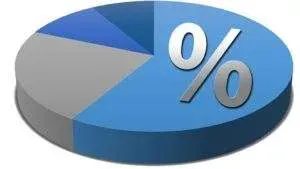 Believe it or not, your homepage is the least conversion-friendly page on your website as it tends to be fairly broad. Some new visitors will arrive directly on your homepage from organic or direct search which is fine. However, instead of directing visitors to your homepage, build a goal-specific landing page. This will allow you to frame information in a way that will best help you achieve your intended goal. Landing pages come in different varieties with the four common types.
Believe it or not, your homepage is the least conversion-friendly page on your website as it tends to be fairly broad. Some new visitors will arrive directly on your homepage from organic or direct search which is fine. However, instead of directing visitors to your homepage, build a goal-specific landing page. This will allow you to frame information in a way that will best help you achieve your intended goal. Landing pages come in different varieties with the four common types.
- Viral Landing Page
- Teaser Landing Page
- Squeeze Landing Page
- Infomercials
The goal of a viral landing page is to invite your customers to enlist their friends. For example, a customer will earn a 20% discount code if they can get three of their friends to sign up. A viral landing page may include a funny video or infographic to increase the hype of your contest. A teaser landing page is extremely useful in increasing hype and awareness of a product launch. A teaser page’s main objective is to give your visitor just enough information to prompt them to go through the next process such as giving their contact information for pre-ordering. If you have multiple products coming out, you can customize teaser landing pages to appeal to each audience. There are so many methods you can utilize with teaser landing pages.
Squeeze landing pages have the intent of capturing content and qualifying lead information. They act as a medium of exchange. Usually, a visitor will exchange their contact information for an eBook, an exclusive discount, or a webinar. An effective squeeze page will keep the goal of the message at the top without having the user to scroll. Infomercial landing pages are exactly what they are and are designed in the same style you would normally expect to see on television. On an infomercial, you will share the valuable information about your product. This includes what it is, how it works, its benefits, testimonials, and a special offer. Infomercial pages are typically used by affiliate marketers when running large campaigns.
Once you’ve decided on the type of landing page to use, you would want to ask yourself these five fundamental questions:
- What is your goal?
- What information do you need from the user? Remember to only ask for information you need. Asking for too much can easily drive users away.
- What does the user need to do? Do they need to fill out a form? Invite a friend?
- What information does the user need to be convinced? What is the benefit to them?
- How will you track results?
Regardless of what landing page you use, always include your logo, an explanation of the offer, a compelling headline, links to related testimonials or reviews, and a strong call to action. Track how your landing pages are performing by checking for abandonment rates. Users may be filling out your form but don’t get past filling in their credit card information or email address. You want to find the problem to why this is happening. By fixing conversion rates, you don’t need to increase traffic to increase revenue.
Lastly, keep your landing pages brief, having just the right amount of information necessary to accomplish its goal. Adding a credential such as a valid SSL certificate, your contact information, or an email policy is also recommended for increasing confidence to your visitors. By applying a landing page and experimenting what works and what doesn’t, you can apply your learnings to the rest of your pages on your website.
How Can You Create Engaging Web Copy?
A lot of people tend to think copywriters and content writers are the same thing. In essence, they are. However, think of them as two sides of the same coin. They both write content that is used offline and online but the work of content writers are usually long-form and rich in information that is also search-engine optimized. Copywriters, on the other hand, specialize in short-form copy such as headlines and advertisements. Copywriters are meant to persuade people to think or act a certain way. For example, if you were writing for a camera, copywriting would say “Because Memories Fade” and content would say “14.1 megapixels.” Copywriting adds to a user’s experience and creates an emotional response that prompts your audience to take an action. So, how can you create engaging web copy?
People don’t read, they scan.
They know what they’re looking for and will jump from headline to image and vice versa and will scan bullet points. Less is more when it comes to copy on your website. With fewer words to work with, make each one count. This starts by knowing your audience. Again, your headline should include something attention-grabbing and as you move into the content, deliver the most important bits first.
Writing drafts really help polish your copy. First, consider these questions:
- Who will read this?
- Why will they read this?
- What should they feel when they are reading?
- What are you trying to accomplish?
- Benefits and features?
By focusing on these points, you have a guideline on how to write your first draft which will then be rewritten with half as many words. After you’ve written your two drafts, compare the two. At some point, you might decide to invest in a professional copywriter. It is a worthwhile investment if you don’t have enough time to hone your skills. Different copywriters have different niches, and while experienced professionals are able to adjust their tone and style to fit your needs, it’s never a bad idea to get someone who is tailored to write for your specific audience.
Install Google Tag Manager
At some point in your digital marketing career, you will need to install tracking pixels, re-targeting tags, and social media tags to track campaigns. This can get complicated if you don’t have sufficient knowledge in programming. By installing Google Tag Manager, it will automatically update your site to include any tags that you’ve added directly to their web interface. And you won’t have to keep modifying your code.
Google Tag Manager also allows you to edit your existing tags, verify they are working properly and set when they will fire. To get started with Google Tag Manager, click here for installation details.
What Are The Foundations Of Analytics?
Accurate data gauges how well your digital marketing efforts are perceived. Your data is your guide, and without it, you will be wandering aimlessly. Data is used for improving performance, look for new opportunities, and stop any campaigns if you absolutely need to. In digital marketing, you have the power to track all of the actions your user takes. There are also a number of tools out there to help you understand the quantitative, qualitative, what is happening now, and what will happen in the future.
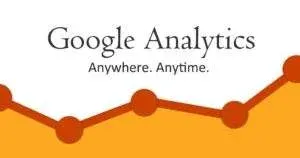 Measure your data by looking at three common medias: paid, owned, and earned. Take a look at your website. By tracking how users are getting to your website, what pages they are visiting, how long their session is, and what page they’re leaving from, you can get an idea of your website’s overall performance. If you find that a page has a high bounce rate, you will know where to start improvements. With analytics, you can also find where most of your traffic is coming from. That way, you will know which of your digital marketing campaigns are performing well and which needs improvement. By installing a tracking code on every page of your website, you can see which pages are great to serve as landing pages and which pages may need better copy.
Measure your data by looking at three common medias: paid, owned, and earned. Take a look at your website. By tracking how users are getting to your website, what pages they are visiting, how long their session is, and what page they’re leaving from, you can get an idea of your website’s overall performance. If you find that a page has a high bounce rate, you will know where to start improvements. With analytics, you can also find where most of your traffic is coming from. That way, you will know which of your digital marketing campaigns are performing well and which needs improvement. By installing a tracking code on every page of your website, you can see which pages are great to serve as landing pages and which pages may need better copy.
Paid analytics are typically tied to a reporting platform and are provided by the tool you’re using to run those ads. It is recommended, however, that you invest in another tracking tool so you can evaluate things from different perspectives and to check accuracy. Chances are that your platforms will report conversions differently. For example, if you have an advertisement on Facebook that is driving traffic to your landing page you should use goal tracking or campaign tracking tags in Google Analytics and Facebook’s advertising dashboard simultaneously. This way you can check if your conversion pixel is working.
Earned media is usually the most difficult to measure. Your outcomes do not have to be determined by spend but the likeability or engagement rate of your products and services. Earned media include your social media fanbase, mentions and interactions on posts, and video views. This type of media is just as important as revenue as initial awareness and positive gossip is essential to business’ success. Look at this data alongside your other digital marketing metrics to set new goals and objectives.
How Does Analytics Work?
By having a general understanding of what happens in the behind-the-scenes of your data collection, your data will become easier and more meaningful to interpret. Every action you take on the web is tracked. What pages are you viewing? What files have you downloaded? Where are your interests? All of this can be tracked by cookies and pixels. A cookie is a small file that is stored on your computer by the website you are visiting. The cookie may contain when you visited what pages, a unique identifier, and even if you’re authorized to view certain logged in content.
A cookie is a small file that is stored on your computer by the website you are visiting. The cookie may contain when you visited what pages, a unique identifier, and even if you’re authorized to view certain logged in content. When a cookie is stored on your computer, the website will also have its own copy. This is particularly useful for catching returning visitors, the duration between visits, and even what ads they have clicked on.
Platforms such as Facebook, Atlas or Google Adsense use cookies track users as they browse the web. This is why you might see an ad from Google on a newspaper website and on a travel blog. As you surf the web, they also have the ability to see a list of what types of sites you visit and how you interact with their ads. They might discover that you are more likely to click on their ad when you’re looking at blogs. As such, this information will allow them to push ads to sites that you’re likely to engage with.
Unlike cookies, a tracking pixel stores information on your web server. They are often used to check for conversion after a user clicks on an ad. To get a better understanding of cookies and pixels, let’s assume you click on an ad to buy movie tickets. As soon as you click, you’re going to receive a cookie. This cookie will include information such as the time you clicked, where you clicked, and what banner was clicked. At this point, the advertising platform will know that you’ve clicked but will have no records indicating a sale. If you do buy those tickets, the website will pull information from the cookie and send it back to the server through the conversion pixel. Now, the advertising platform will know that a sale has been made.
Goal And Event Tracking
Setting up goals is important. But are you meeting those goals? You know what you want your users to do when they come to your website, but with so many other actions available to them when they arrive, it can be difficult for them to miss your intended action completely. They have access to a pool of information, the ability to click on so many links, download eBooks or pdfs, watch your videos, and so on. You, however, may simply want them to fill out a simple form or sign up for an account. Goal conversions are an effective way to see if your digital marketing efforts are reaping rewards. To track your goals and events, you will need to be using Google Analytics. To get a detailed look at how to set up goals and events, click here.
Conversion Funnels
What is the process a user goes through to arrive at a sale? Conversion funnels are the visual representation of a user’s path to goal completion. When you’re just getting started, your funnel may look really wide at the top very narrow at the bottom. Why? People tend to drop off at different levels. It’s wide at the top because you’re just starting to gather awareness of your service or product. A lot of people will know about you but not all of them will stay until the end. As your digital marketing efforts improve, your funnel will become more optimized which will take a more gradual shape. This suggests limited abandonment which what you should always strive for. A poorly optimized funnel will have aggressive drop-off rates and essentially look deformed. On the other hand, a perfect conversion funnel will look like a straight cylinder.
Your funnel can be organized in this format: a product page at the top, payment form in the middle, and completion being the last step. By analyzing the different steps of your funnel, you can see what steps are causing problems for users. Use your funnel to test page variations, copy, and identify bugs or browser issues. With Google Analytics, you can create your own visual funnels. to get a better idea of funnels and how it relates to goal flow, click here.
What Are Your KPIs?
KPIs are the abbreviated form of key performance indicators. They are used to refine the information you gather across your digital marketing channels to give you a clear view of how you are performing. Without KPIs, you will be overwhelmed by your data that will be difficult to organize. If you are monitoring your KPIs, you will be able to see what’s working, what’s not, and the impact they have each other.
KPIs should be closely related to your business goals.
They must be measurable and easy to understand. Therefore, KPIs should be quantifiable goals. For example, “Increase traffic by 3% on a monthly basis” would be a good KPI versus its vague counterpart “Increase traffic.” KPIs should also be tied to your digital marketing objectives. That way, they will be influenced by your effort. If you are running a test advertisement to get acquisition costs, your KPI would be something along the lines of “Achieve a $40 CPA.” However, if you identified your KPI as “Achieve 100 sales”, you will be putting your efforts into something that you’re not trying to achieve. That doesn’t mean that you can combine them. By succeeding at the initial $40 CPA, scale your KPI to indicate “Generate 100 sales per month at a $40 cost per acquisition.”
A simpler KPI could be setting a bounce rate if you’re planning on landing pages. For broader objectives, set a KPI for the ratio of new to returning visitors or total revenue. In essence, your KPIs should always be related to your digital marketing goals. Take the time to pick metrics that are relevant to your business and organize them in a fashion that makes sense.
What Are Attribution Models?
An attribution model is the rule or set of rules that determines how credit for sales and conversions are assigned to touchpoints in a user’s conversion path. There are seven attribution models that you should be aware of:
- Last Interaction
- First Interaction
- Last Adwords Click
- Last Non-Direct Click
- Linear
- Time Decay
- Position Based
Assume that your customer finds your site by clicking on one of your Adwords ads. One week later, he returns by through a social media channel. The same day, he returns from an email campaign, and that evening he returns directly to your site and makes a purchase.
The last interaction model would give 100% of the credit to the direct channel. However, the last non-direct click model would give all of its credit to the last channel the customer came from, ignoring any direct traffic. In this case, it would be the email channel. This customer had only one AdWords click. Therefore, the Last Adwords Click attribution model would give all of its credit to the Adwords ad or the paid search channel. Regardless of where the customer first got to your site, the First Interaction Model would always assign all credit to the first channel which in this case would be the paid search channel. In Linear, however, each touchpoint would get assigned equal value. Therefore, the paid search, social network, email, and direct channels would all receive 25% of the credit.
Regardless of where the customer first got to your site, the First Interaction Model would always assign all credit to the first channel which in this case would be the paid search channel. In Linear, however, each touchpoint would get assigned equal value. Therefore, the paid search, social network, email, and direct channels would all receive 25% of the credit. The Time Decay Model gives its credit to the touchpoints closest in time to the sale. In this case, the direct and email channel would receive the most credit because of how close the customer interacted with them until the time of conversion.
The social channel would receive less credit; the paid search interaction would receive even less because of the long time difference. Lastly, the position based attribution model assigns 40% of the credit to the first and last interaction with the remaining 20% distributed evenly to the middle interactions.
There are a variety of ways to build out your attribution models. One method is to track individual metrics in Excel and make comparisons between each channel. There are also third party attribution tools available for you. It’s important to understand how you are attributing your sales. Your models might change as patterns emerge. Regardless, always be keeping tabs on your data.
Search Engine Optimization
 When you search on Google, do you ever wonder how websites in the top positions got there? That’s because they have good search engine optimization or SEO. How the algorithms work behind search engine optimization is a closely guarded secret, and most people tend to think that there’s some magic behind SEO. To better understand optimization, you first need to get a general idea of how search engines work. Search engines like Google will have a software program that crawls the web by following links. The crawler will arrive at a page, read the code, and stores the information. The stored information is called the index. Once you are indexed by Google, you will be well on your way to ranking. When you enter a search term, Google will rank pages from best to worst. The best pages will often deliver the best content.
When you search on Google, do you ever wonder how websites in the top positions got there? That’s because they have good search engine optimization or SEO. How the algorithms work behind search engine optimization is a closely guarded secret, and most people tend to think that there’s some magic behind SEO. To better understand optimization, you first need to get a general idea of how search engines work. Search engines like Google will have a software program that crawls the web by following links. The crawler will arrive at a page, read the code, and stores the information. The stored information is called the index. Once you are indexed by Google, you will be well on your way to ranking. When you enter a search term, Google will rank pages from best to worst. The best pages will often deliver the best content.
Rank is determined by importance and relevance.
Complex algorithms are goes through hundreds of variables to decide where your page will land. These variables are what you are aiming to optimize. This can include what topics you are writing on, links to your page, how your website is programmed, and mobile optimization. Google can even evaluate the quality of the pages that are linking to you. Are they relevant? On brand? Popular? With great pages linking to your site, Google will assume you are more credible than unpopular pages.
Keep in mind that SEO results can also be skewed as you can’t control every single variable. This includes where a user is searching from, trending topics, and any current events that are linking to your content. Great SEO leads to an impressive ROI. Poorly done SEO will have a negative impact on your organic search efforts.
What Are The Essential SEO Optimization Techniques?
SEO can get tedious as it is an ongoing effort with no specific tactic you can start with to succeed. Many factors have to be taken into consideration, evaluated, tweaked, and then refined. So, where do you start? Know what is essential to your SEO success. First, ensure that your page(s) can be indexed. By allowing crawlers to be accessible to every page on your website, you will are well on your way to ranking. Search engines also love text. If your pages have a ton of images with very little text, that can pose a problem. Get linked! By getting hyperlinks to every page on your website, search engines will treat you well. Lastly, build a flat site hierarchy instead of a deep site hierarchy.
A deep site hierarchy has content buried deep within your site. This means that search engines have to spend more time indexing content, and the further it goes, the less value it’s applying to each page. Essentially, the pages that are indexed further down the line are considered less important. This also means that a user has to click more times to arrive at a specific content page. Also, pay attention to siloed content. Siloed content has no direct link from any of the site’s pages, including the homepage. With that being said, a flat site hierarchy is simple, fast for users to get to and for search engines to index.
This does not mean that you can’t have a lot of content on your website. There are exceptions.
If you have tons of content you want to put on your site, first focus on building a site that is easy to navigate with the most important content linked clearly and prominently. Keep an eye on your URLs too; keep them free of extensions and use natural language. For example, a URL of clothingsite.com/women/shirts/cotton-blouses is going to be much better than clothingsite.com/productid=345. Also, keep your title tags unique to each individual page. Each page should also have its unique meta description. This meta description shows up as a snippet of what the page is about on Google.
Keyword Research
What are people searching for? What words are more popular? By doing research on popular and relevant keywords to your business, you can optimize your content or steer your business in a different direction. Put yourself in your audience’s shoes and visualize what they might be searching for. What are they thinking? What are they looking for? The goal is to arrive at a reasonable hypothesis of what your audience is typing into Google. With the Google keyword tool, you can look at the volume of keywords searched and decide which to use for your SEO. You will be amazed at the range of searches simply by changing a few letters or by using a word’s synonym.
Content Strategy
A key component to an effective digital marketing strategy is to have great content for Google to read. Google reads content on your website with a slight bias on keywords and to understand what is happening with your website. While it is important to keep those relevant and effective keywords in mind, it’s almost impossible to have your content littered with them. Quality over quantity should always be a rule of thumb when it comes to content. By continuously forcing keywords in your writing is not going to help you nowadays as search engines have evolved to understand the relationship between words and phrases. Therefore, by reinforcing keywords unnaturally can negatively impact your efforts.
When you are curating content, especially written, keep in mind that there is no magic number that you must hit with keywords. Build your content around these keywords and related concepts and terms to give Google enough information to know what this content is about. Don’t try to cheat the system as that will only put you behind.
Local SEO
Local SEO in digital marketing is a fairly in-depth process that is a worthy investment if your business requires drawing local customers. Here are some of the key highlights that are associated with local SEO. First, to get you listed on Google Maps, you would want to set up a Google My Business listing. By setting up an account, you will have the benefits of showing positive customer reviews and get listed in online directories. While it is not enough to only set up a Google My Business listing account, it is a good first step in your local SEO efforts.
Professional SEO
As Search Engine Optimization wields the power of bringing an incredible amount of traffic to your website, you may want to consider hiring the right professional to do your SEO for your digital marketing. SEO is the combined effort of many factors that are used to determine how websites rank with no one guaranteed strategy. Professional SEO can be costly. However, undoing bad SEO can be costlier. Here are some red flags to watch out for when choosing a professional SEO company.
 You will not always be guaranteed that number one spot all the time. There’s more to SEO than earning that top spot. Your SEO company should provide an honest overview of what to expect and tell you that these improvements can take several months to see results. The second red flag to watch out for is to build a link farm. By participating in link exchanges or using a bunch of pages to only include links to other sites will dilute the authority of your site. Third, there is no such thing as instant results. While that can be tempting to see and invest in, honest and valuable SEO takes a lot of long term effort with great results in the long run. Lastly, avoid anyone who claims to have a special relationship with Google that will get you ranking faster and better.
You will not always be guaranteed that number one spot all the time. There’s more to SEO than earning that top spot. Your SEO company should provide an honest overview of what to expect and tell you that these improvements can take several months to see results. The second red flag to watch out for is to build a link farm. By participating in link exchanges or using a bunch of pages to only include links to other sites will dilute the authority of your site. Third, there is no such thing as instant results. While that can be tempting to see and invest in, honest and valuable SEO takes a lot of long term effort with great results in the long run. Lastly, avoid anyone who claims to have a special relationship with Google that will get you ranking faster and better.
Google does not accept payment or give anyone the advantage to SEO success. Everyone doing SEO is on the same level with some having different resources. And while different companies will have access to different SEO tools, keep in mind that there is no one gets special treatment or knowledge. It’s all about how you use the resources you have to get results.
Don’t be afraid to ask the company about their resources and their team. An SEO company worth investing will have no problems being transparent with you. The qualities of a person or company is also an important thing to consider. Know who will be interacting with your project and base your evaluation on their team or offering. Also, higher pricing does not equate to good work. Be thorough in your research to seek out a company whose efforts is worth the money you pay, and never be hesitant in questions as SEO is a decision critical to your digital marketing journey.
Search And Display Marketing
Digital marketing has many benefits, the biggest one being the ability to target people so specifically. Search and Display advertisements are shown digitally which allows us to measure exactly when a user clicked, where they clicked from, and what happens after they click. Armed with this information, you can tailor your digital marketing efforts accordingly to optimize your ROI.
 Search marketing involves placing pay-per-click advertisements on the organic results page. Because these advertisements are a pay-per-click, you are not paying for impressions but an action. Search marketing shows ads that are very relevant to a searcher’s needs and can be very competitive. First, Google will grab the list of advertisers who will want their ads displayed. Next, the search engine will look at the cost each advertiser is willing to pay. It will be an all-out bidding war until the top bids are identified. The top bids will be assigned a quality score which will be determined by the keywords’ click-through rate, the ad’s relevancy, prior keyword performance, and the keyword focus on the landing page. The quality score determines which bidder out of the top bidder list shows up in which slot.
Search marketing involves placing pay-per-click advertisements on the organic results page. Because these advertisements are a pay-per-click, you are not paying for impressions but an action. Search marketing shows ads that are very relevant to a searcher’s needs and can be very competitive. First, Google will grab the list of advertisers who will want their ads displayed. Next, the search engine will look at the cost each advertiser is willing to pay. It will be an all-out bidding war until the top bids are identified. The top bids will be assigned a quality score which will be determined by the keywords’ click-through rate, the ad’s relevancy, prior keyword performance, and the keyword focus on the landing page. The quality score determines which bidder out of the top bidder list shows up in which slot.
Display advertisements can be banner ads or same text ads. However, instead of showing on the result page, they are shown on someone else’s website. Display advertisements target people based on the content of the page they are on, the website, or based on what websites you visited in the past. While display ads are effective for re-marketing and for generating brand awareness, they are not great for getting a direct response. This is because the display is targeting are usually a member of the target audience, but he or she has not shown any purchasing intent.
What Are The Benefits Of A Remarketing List?
Building a remarketing list is a great leveraging technique that is extremely helpful in reminding people to re-engage with your site. A remarketing list allows you to speak to a very special audience who have been to your site in the past. By implementing a special tracking code, remarketing helps you recover some of the lost traffic. The standard remarketing technique is through Google Adwords. Google Adwords allows you to show ads to past visitors through the display network on any site that is a part of Google’s network.
Social Media Marketing
The Internet has evolved into a community that is always engaging in conversation. The creation and changes to social media platforms have created opportunities for businesses to listen and engage with relevant conversations their audience is having. With social media, businesses can now create their own conversations and have customers do the marketing for them. However, like with any aspect of marketing, you must create an effective strategy. Done right, social media will generate positive buzz about your business. Done wrong, it can cause significant harm to your brand image.
 Regardless of what business you are in, social media is a must-have component of any digital marketing strategy. While social media can be as simple as a blog or a customer forum, there are four large platforms that are common in the business sector with a unique style, functionality, and best practices that you can implement in your digital marketing efforts.
Regardless of what business you are in, social media is a must-have component of any digital marketing strategy. While social media can be as simple as a blog or a customer forum, there are four large platforms that are common in the business sector with a unique style, functionality, and best practices that you can implement in your digital marketing efforts.
Before you jump into the realm of social media, first consider how much time you can allocate to social media with the average benchmark being an hour a day. You need to write copy, design or find images to support your message, and then evaluate your results. What resources do you have available to you? Is this an individual effort or can you bring in some people to help? By factoring in how much time you have, you may or may not decide to get some help.
The next thing you need to take into account is your budget. Even if you are not doing any paid advertising, calculate the hourly rate and include that as part of your spend. However, if you are going to do paid advertising, try to allocate roughly 500 dollars a month when you’re just starting out or experimenting the efficiency of your spending efforts. Like with all of your digital marketing strategies, you are talking to a specific audience. If you are able to adapt and scale alongside social media, your brand will definitely benefit in the long term.
Where Is My Audience On Social Media?
The big four social media platforms are Facebook, Twitter, LinkedIn, and Pinterest with Instagram following close behind. Nowadays it is difficult to find someone who does not have a social media account of some kind. According to the Pew Research Center, 71% of Internet users have a Facebook account, and regardless of what anyone says you will always find a significant number of people to target on Facebook. Keep in mind, however, that social media platforms are rented land. This means that rules can change without notice and new ones can be put into place. This doesn’t mean that you won’t find long-term success as their paid advertisement brings some of the best ROI compared to other social media channels.
Facebook is great for an audience that appeals to ages 24 to 50. Younger users are shifting away from Facebook and joining Snapchat or Instagram. Whether you’re a small business or a large enterprise, anyone can benefit from using Facebook smartly. However, small businesses may want to focus on paid media to start and slowly work toward a growing fan base.
Facebook is great for an audience that appeals to ages 24 to 50. Younger users are shifting away from Facebook and joining Snapchat or Instagram. Whether you’re a small business or a large enterprise, anyone can benefit from using Facebook smartly. However, small businesses may want to focus on paid media to start and slowly work toward a growing fan base.
Twitter captures roughly 20% of the Internet population with its user demographic between the ages of 18 to 29. Unlike Facebook who has an equal percentage of male and female users, Twitter is slightly biased toward women. It’s great for short and immediate communication and is a top choice for consumers giving support to their favorite brands. There is an impressive mobile usage with 30% of users checking their Twitter feeds multiple times throughout the day. However, it requires more time investment and ads are more expensive. But it’s easier to join conversations and look for new leads.
Some do not view LinkedIn as being a frequented social network. Having a constant presence on here may or may not bring much value as it is quite a different platform compared to others. It’s tailored to target an older demographic and has the highest percentage of professionals. LinkedIn is completely business centric and serves as a means to network rather than give shout outs to brands and/or companies, and follow and continue trends. If you are a small business, it’s worthwhile to build a business page as a backbone to any business lead generation.
Pinterest and Instagram have grown and are continuously growing in popularity. Both are very visual platforms and can be a huge asset to any brand when used appropriately and effectively. Pinterest is built on the idea of bookmarking or pinning things that you find around the web with the majority of its users being young affluent females. It is a time investment that builds your followers through visual content on your website.
As you are considering which platforms to use for your digital marketing strategy, consider where your competitors are. Consider where businesses in a similar market are putting their efforts. Look at their engagement and how responsive their audience is. It’s a great starting point to know what your audience is loving.
Facebook Marketing
Creating a Facebook page should be the starting point of your Facebook marketing journey. A Facebook page lets visitors stay connected with your brand and get the latest updates or product launches. Like with all of the other social media platforms, your Facebook page is an extension of your business. Take the time to customize how it looks, what you post, and decide how you want to respond to your customers. These factors are all critical to your success as well as its engaging cover photo.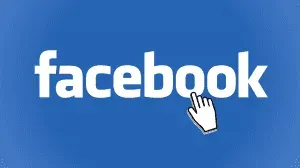
In addition, use a relevant profile photo which can be as simple as using your company logo. By going to facebook.com/pages from your personal account, you can begin to set up one of your own pages and browse others for ideas. As you set up your Facebook page, think about which audience you are appealing to and how you can tailor your posts that will engage with them.
By going to facebook.com/pages from your personal account, you can begin to set up one of your own pages and browse others for ideas. As you set up your Facebook page, think about which audience you are appealing to and how you can tailor your posts that will engage with them. There’s a high chance that your followers are also following other pages and will receive their updates on their feed. So, the more engaging and relevant your content is, they will be more likely to see it. Experiment with different kind of posts and don’t limit yourself to only one type.
Once you’ve built out your page, create some ads. By going through ads.facebook.com, follow an easy walkthrough to set up your campaigns. Different campaigns will have different objectives. If you are looking to drive clicks versus generating page likes, you will click on those specific objectives. Leverage your existing digital marketing channels to drive awareness to your Facebook page. Like with any marketing efforts, it will take some time to get a meaningful audience. But you will only grow by continuously delivering quality content.
Twitter Marketing
Twitter is used for short and rapid communication. Though it is slightly biased toward a younger generation, if you are able to create and capture conversations about topics related to your products and/or services or about your competitors, it will benefit your business immensely. You might leverage Twitter to only promote products, share upcoming details about a product launch, or convey your brand’s personality. Regardless of what your core digital marketing objectives are, you need to consider what will work best on this platform. What is it that you’re trying to accomplish on 140 characters or less? Know what your objective is first before investing too much of your effort into something that can be done more appropriately and effectively on another platform.
Your tweets will automatically be delivered to anyone who follows you. However, this does not guarantee that any of your followers will see your tweet. They are following other brands, businesses, and people, all of whom are sending streams of ideas to their feeds multiple times throughout the day. A good tweet stands out and is timely. But you can always rest assure that Twitter is putting your content front and center to those that follow you.
LinkedIn Marketing
LinkedIn can be thought of as a networking platform for business professionals. However, businesses of any size are still able to stand out by creating a business page. You can include an engaging cover photo, a bio about your company, and updates from you when visitors click on to see more. Users who follow your page can choose to like the content, comment, or share it with their network of other professionals. When a user follows you, every time you publish an update, it will show up on their news feed. They will be able to interact with it without having to visit the business page.
The primary objective with a LinkedIn business page is to generate business leads and strengthening customer relationships. By sharing valuable and rich content, you will speak volumes to a business centered audience. You can also choose to link to careers. From there, you can display what positions are currently available or link them to options that are available for a career track. Similar to Facebook and Twitter, LinkedIn does have a paid advertising platform and have a variety of features. If you’re specifically trying to reach business professionals, LinkedIn is a great platform to get started on.
Pinterest Marketing
![]() As Pinterest is a very visual platform, you will need a lot of a visual creativity. Keep in mind that it also has to align with your target market; that way there will be a great opportunity to capture a unique audience. By creating specific boards, people can follow specific boards or follow all at once. To set up a business account with Pinterest, go to business.pinterest.com.
As Pinterest is a very visual platform, you will need a lot of a visual creativity. Keep in mind that it also has to align with your target market; that way there will be a great opportunity to capture a unique audience. By creating specific boards, people can follow specific boards or follow all at once. To set up a business account with Pinterest, go to business.pinterest.com.
While Pinterest is one of those platforms that are not suitable for all businesses, don’t be so quick to throw it out the window. Anything can become visual. By taking photographs at different angles or getting a regular screenshot and editing a little bit may get you some likes and follows. Just remember that investing in Pinterest will be very time intensive because of the heavily visual content you’re constantly creating. Explore the platform a little bit more and see if similar brands are also using Pinterest as a technique to generate meaningful ROI.
Video Marketing
YouTube has grown exponentially and is now the second largest search engine next to Google. As such, this makes YouTube an incredibly valuable resource for driving brand awareness and traffic to your website. Video marketing can be used to show off your location, your products, services, or even help customers through their buying decision. In addition, you can also use video to tell your brand story or create your own commercial. There are infinite possibilities you can achieve with video. While YouTube is a continuous battlefield for views, it is not impossible to stand out from your competitors and generate some valuable ROI. Google knows how valuable good videos are. A video that is well-titled and described can appear in Google’s search engines. If your video has a significant number of “thumbs up” as well, this tells Google that this video is well-liked and is achieving its goal.
Two companies who utilized videos well are DollarShaveClub and Blendtec. DollarShaveClub saw an increase in their growth trends and revenue due to their viral video on YouTube. Within the first 48 hours of posting the video, they accumulated 12,000 new customers and had gained four and a half million views. As such, the video received many press mentions, social media shares, and have been included in case studies. Blendtec put a unique spin on their YouTube video series called, “Will It Blend?” To show the effectiveness of their blender, the founder dropped various items into the company product which resonated with their audience. From golf balls to the latest iPhone, Blendtec directly answered their customers’ curiosity. The reason why these videos went viral was not due to luck. DollarShaveClub hired the right team and told a story through an unexpected video montage while Blendtec jumped onto trends.
Because these videos did so well, people have been continuously sharing these videos with their friends and engaging with the brand, especially with Blendtec. By putting out suggestions of what should be blended next, Blendtec has built potential to build video content that will resonate with their audience. While viral videos are very powerful in its impact, your focus does not always have to be about going viral. Videos can be used to answer questions via YouTube or reinforce your brand’s commitment to customer service. Your biggest benefit from video marketing is by creating interesting and unique content.
How You Can Get Started With Video Marketing
Most users will find your content through YouTube search, which is why one of the best places to begin your video marketing effort is on YouTube. Most YouTube users won’t be interacting with your channel page until they subscribe. Regardless, it’s important to treat your channel just as you would treat your Facebook and Twitter business pages. Therefore, choose a high-quality image for your channel art and profile picture. Google will show how your channel art will appear on desktop, TV, and in mobile. You are free to rescale the photo and edit your channel description accordingly. By editing your channel settings, it will take you to a section called “Creator Studio.”
